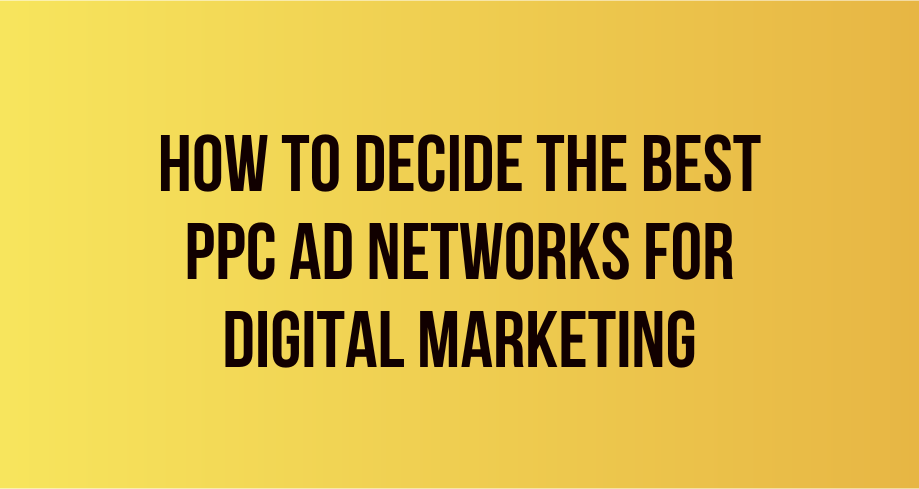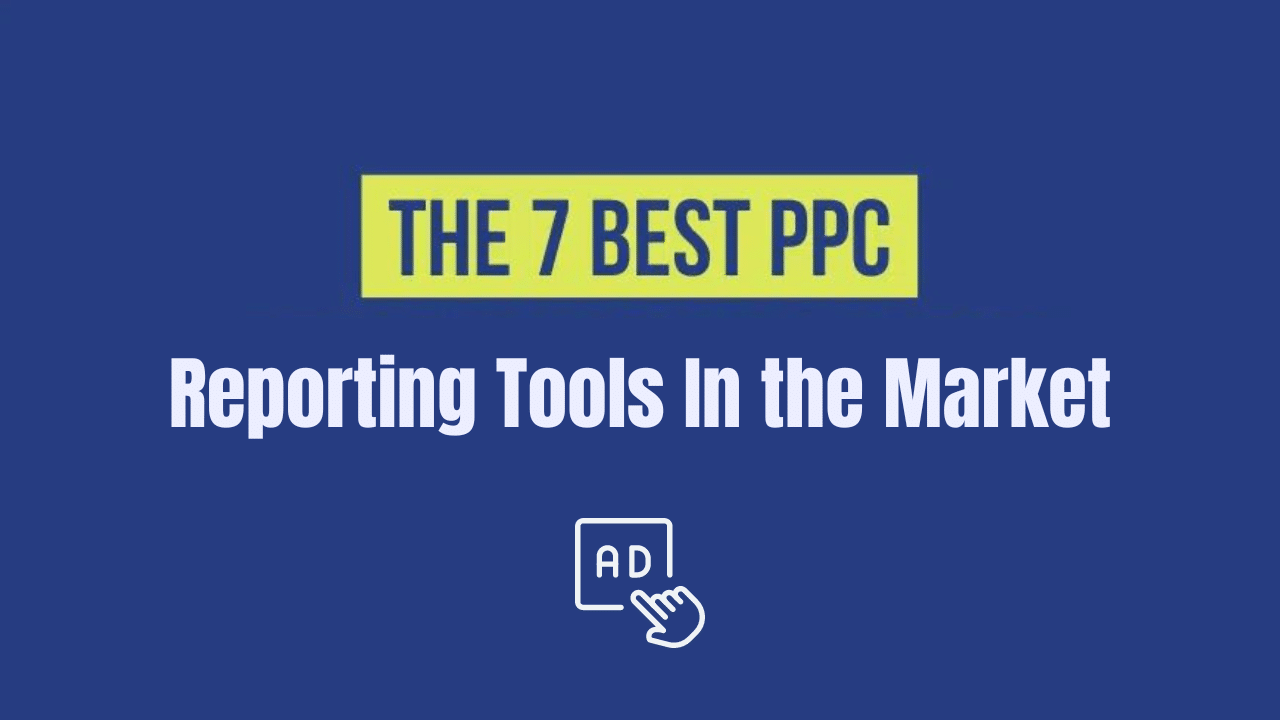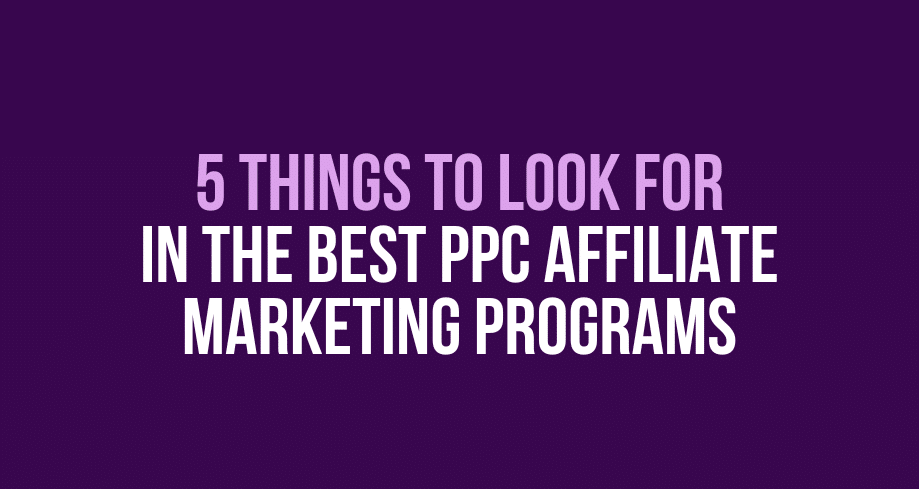We know online advertising is crucial in reaching target audiences and driving business growth. Pay-Per-Click (PPC) advertising has gained significant popularity among the various online advertising strategies. PPC ad networks act as intermediaries between advertisers and publishers, connecting businesses with potential customers through targeted ad placements.
While the concept of PPC advertising is widely understood, choosing the best PPC ad networks can be a challenging task. With numerous options available, it’s essential to identify the most effective networks that align with your specific advertising goals.
Today, we will explore key considerations and factors to help you make an informed decision when selecting the best PPC ad networks. By the end, you’ll better understand how to maximize the potential of your PPC campaigns and achieve optimal results.
1 Understanding PPC Ad Networks
PPC advertising is an online advertising model in which advertisers pay a fee each time a user clicks their ad. It is a way to buy website visits rather than organically earning them. Advertisers bid on keywords relevant to their target audience, and when a user searches for those keywords, their ads are displayed. The advertiser is only charged when the ad is clicked, hence the name “pay-per-click.”
Ad networks serve as the go-between when it comes to advertisers and publishers. They facilitate the placement of ads on various websites and digital platforms. Ad networks provide a platform where advertisers can create and manage their campaigns, while publishers offer ad spaces on their websites or apps where the ads will be displayed. Ad networks handle the technical aspects of ad delivery, targeting, and tracking, making it easier for advertisers to reach their desired audience. Advertisers can use no-code tools to easily design, launch, and optimize their ad campaigns without needing any technical expertise.
2 Benefits of Using PPC Ad Networks
Reach a Larger Audience
PPC ad networks have vast partner websites and platforms, giving advertisers access to a wide audience base. This extensive reach allows businesses to expand their brand visibility and increase the chances of reaching potential customers. Ad networks often partner with popular websites, search engines, and social media platforms, allowing advertisers to tap into diverse online audiences.
Target-Specific Demographics
One of the significant advantages of PPC ad networks is the ability to target specific demographics. Advertisers can define their target audience based on age, gender, location, interests, and browsing behavior. This precise targeting ensures that ads are shown to the most relevant audience, increasing the chances of attracting qualified leads and driving conversions.
Track and Measure Campaign Performance
PPC ad networks provide robust analytics and tracking tools that allow advertisers to monitor and measure the performance of their campaigns. Metrics like conversions, impressions, clicks, click-through rates (CTR), and return on investment (ROI) can be tracked by advertisers. This data-driven approach enables advertisers to make data-backed decisions, optimize their campaigns, and allocate their budget effectively to achieve better results.
3 Factors to Consider When Choosing PPC Ad Networks
Relevance and Targeting Options
When selecting a PPC ad network, choosing one that aligns with your niche or target audience is crucial. Consider the following:
- Importance of ad networks that align with your niche: A network specializing in your industry or target market can provide more relevant ad placements and better reach.
- Availability of targeting options: Look for ad networks that offer targeting options such as keywords, demographics, geolocation, interests, and behavior. This allows you to tailor your ads to reach the most relevant audience.
Ad Formats and Placement Options
The ad formats and placement options offered by ad networks can significantly impact campaign effectiveness. Consider the following:
- Different ad formats: Ad networks provide various formats like text ads, display ads, video ads, native ads, and more. Choose a network with formats suitable for your campaign goals and target audience.
- Importance of ad placement options: Consider where your target audience is most likely to be found—websites, mobile apps, or specific platforms. Select ad networks that offer placement options relevant to your target audience’s online behavior.
Network Reach and Traffic Volume
An ad network’s reach and traffic volume are crucial to campaign success. Consider the following:
- Significance of a large reach: Ad networks with a broad reach have a higher potential to expose your ads to a larger audience, increasing the chances of driving more traffic and conversions.
- Impact on campaign performance and ad visibility: Networks with substantial traffic volume can provide more opportunities for ad impressions, clicks, and conversions. This can positively impact your campaign’s performance and increase your ad’s visibility.
Cost and Budgeting
Considering PPC ad networks’ cost and budgeting aspects is essential for optimizing your advertising spend. Consider the following:
- Different pricing models: Ad networks commonly use pricing models like Cost-Per-Click (CPC), Cost-Per-Mille (CPM), or Cost-Per-Action (CPA). Understand the pricing models networks use and choose one that aligns with your budget and advertising goals.
- Importance of aligning cost structure with your budgeting: Ensure that the ad network’s cost structure is reasonable and aligns with your budgeting requirements. Avoid networks with excessively high costs that may strain your budget.
Ad Network Reputation and Quality
Selecting reputable and trustworthy ad networks is crucial for ensuring ad performance and user experience. Consider the following:
- Importance of selecting reputable networks: Reputable networks have established relationships with trustworthy publishers and maintain high-quality ad inventory. This can enhance the credibility and effectiveness of your ads.
- Potential impact on ad performance and user experience: Poor-quality networks may display ads on irrelevant or low-quality websites, leading to lower click-through rates and potential damage to your brand reputation. Choose networks known for maintaining ad quality standards.
Analytics and Reporting Capabilities
Analytics and reporting capabilities are vital for tracking and optimizing campaign performance. Consider the following:
- Significance of robust analytics and reporting features: Look for ad networks that provide comprehensive analytics and reporting tools. This enables you to track key metrics, measure campaign performance, and gain insights for optimization.
- Ability to track and measure key metrics: Ensure the network allows tracking metrics such as impressions, clicks, CTR, conversions, and ROI. Accurate data helps you evaluate the effectiveness of your campaigns and make data-driven decisions.
4 Top PPC Ad Networks to Consider
Choosing the right digital advertising platform is essential for your end goals. Let us check out the ad platforms on offer.
Google Ads
Google Ads is the most popular and widely used PPC ad network. Consider the following:
- Popularity and reach: Google Ads has an extensive reach, allowing you to display your ads on Google search results, websites within the Google Display Network, and YouTube videos.
- Ad formats and targeting options: Google Ads offers various ad formats, including text ads, display ads, video ads, shopping ads, and more. It provides robust targeting options based on keywords, demographics, interests, and remarketing.
- Analytics and reporting capabilities: Google Ads provides in-depth analytics and reporting features to track the performance of your campaigns. Metrics such as impressions, clicks, ROI, and conversions are considered.
Microsoft Advertising
Microsoft Advertising (formerly Bing Ads) offers an alternative PPC ad network to consider. Consider the following:
- Advantages of using Microsoft Advertising: Microsoft Ads reach a significant portion of the search market share, including Bing search engine and partner sites like Yahoo. It can provide additional reach beyond Google Ads.
- Network reach and targeting options: Microsoft Advertising allows you to target audiences on Bing search results, partner websites, and Microsoft-owned platforms. It offers targeting options similar to Google Ads, including demographics, keywords, and location.
- Unique features or benefits: Microsoft Advertising integrates with Microsoft’s audience network, which includes platforms like LinkedIn, Outlook, and MSN. This can provide additional targeting opportunities for specific audiences.
Facebook Ads
Facebook Ads is a powerful PPC ad network with a wide user base and robust targeting options. Consider the following:
- Benefits of advertising on Facebook: Facebook Ads offers access to billions of active users, allowing you to reach a vast audience. It provides opportunities for social media marketing and engagement with users through likes, comments, and shares.
- Targeting options and ad formats: Facebook Ads allow precise targeting based on demographics, interests, behaviors, and custom audiences. Multiple ad formats such as images, carousels, and videos are supported.
- Audience reach and potential for social media marketing: Facebook has a large user base, making it an excellent platform for reaching diverse audiences. Its social media environment enables you to create engaging ad campaigns that can generate brand awareness, lead generation, and conversions.
5 Other Notable PPC Ad Networks
While Google Ads, Microsoft Advertising, and Facebook Ads are widely popular, there are other noteworthy PPC ad networks to consider, such as:
- Amazon Advertising: Ideal for businesses selling products, as it allows advertising on Amazon’s platform, reaching millions of online shoppers.
- LinkedIn Ads: A professional networking platform that offers B2B targeting options and allows you to reach professionals based on industry, job title, company, and more.
Each network has unique features and advantages, so consider exploring them based on your specific business goals, target audience, and industry.
6 Frequently Asked Questions
Tell the difference between Google Ads and Facebook Ads.
The main difference between Google Ads and Facebook Ads lies in their targeting options and user intent. Google Ads focuses on keyword-based targeting, displaying ads when users search for specific terms. On the other hand, Facebook Ads leverage user data and interests to target specific demographics and display ads within the Facebook and Instagram platforms.
How much does it cost to advertise on PPC ad networks?
The cost of advertising on PPC ad networks varies depending on factors such as bidding competition, ad quality, and target audience. Networks like Google Ads and Facebook Ads use auction-based pricing models, where advertisers bid for ad placement. Factors like the bid amount, ad relevance, and overall campaign performance determine the cost.
Can I track the performance of my PPC campaigns on ad networks?
Yes, most PPC ad networks offer comprehensive tracking and reporting capabilities. Advertisers can track key metrics like impressions, clicks, conversions, click-through rates (CTR), and return on investment (ROI). Networks like Google Ads and Facebook Ads provide robust analytics tools to measure campaign performance and optimize strategies based on data insights.
Conclusion
By making an informed decision and selecting the PPC ad networks that best align with your advertising goals, you can enhance your brand’s visibility, drive qualified traffic, and achieve optimal results from your PPC campaigns.
Take the time to assess your requirements, explore the features and benefits of various networks, and choose wisely. With the right PPC ad networks in your arsenal, you can take your online advertising to new heights and achieve your desired business outcomes.




